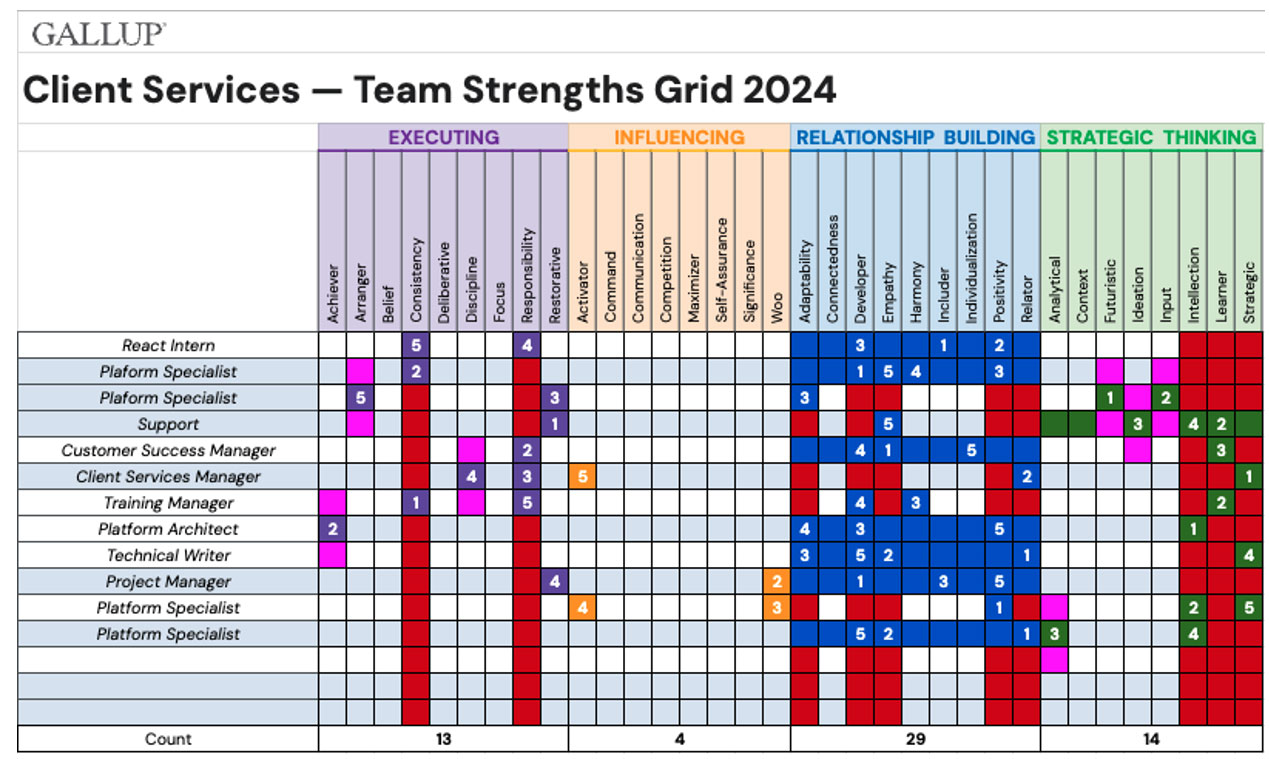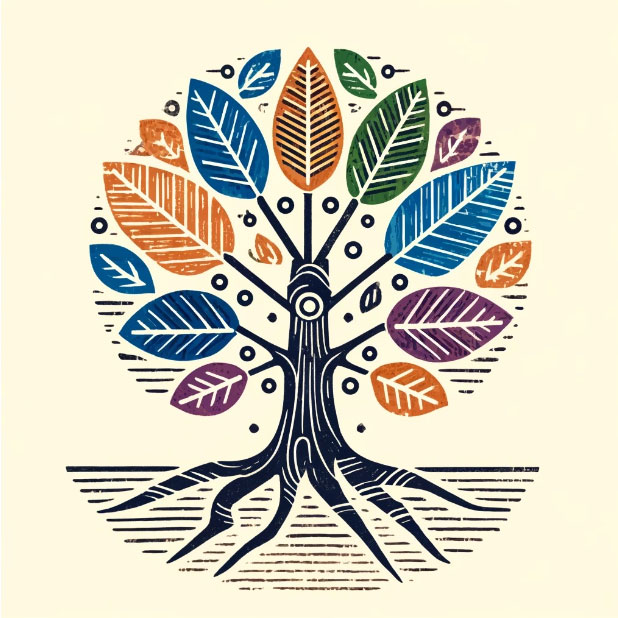Unleashing Potential: Growing Team Success with CliftonStrengths
Understanding each team member’s unique strengths is crucial for building a cohesive and productive team. The CliftonStrengths exercise is a powerful tool that helps identify individual talents and fosters a deeper understanding of how these strengths can be harnessed for team success.
In this blog post, I’ll share my experience implementing a CliftonStrengths exercise within our team and its benefits to our organization.
What is the CliftonStrengths Exercise?
The CliftonStrengths exercise, developed by Gallup, is an assessment that helps individuals discover their top strengths. These strengths are categorized into four main domains:
- Executing: People with strengths in this domain are adept at making things happen.
- Influencing: Those with strengths excel at taking charge, speaking up, and ensuring others are heard.
- Relationship Building: Individuals in this domain are skilled at building strong relationships to hold a team together.
- Strategic Thinking: These strengths help teams consider what could be and create a path forward.
By identifying these strengths, team members can better understand their unique contributions and how they can collaborate more effectively with others.
As the Head of Client Services, I oversee a diverse team comprising Customer Success, Training, Support, Delivery, and Platform Specialists. I asked each team member to complete the CliftonStrengths assessment on their own time to understand and leverage their unique strengths. Once they finished, they shared their Top 5 Strengths PDFs with me. I then tracked these strengths in their employee profiles and created a comprehensive strengths map for our team.
Analyzing and Mapping Team Strengths
One of the most enlightening parts of the process was mapping each person’s skills across a grid and ranking them from 1 to 5, placing them in the square corresponding to their strength. This detailed mapping allowed me to visualize and analyze our team’s strengths distribution. By doing this, I noticed several patterns:
- Domain Concentrations: I identified team members with more than three strengths in a single domain, revealing areas where the team excelled collectively.
- Individual Strengths: Some team members stood out with individual skills, showing strengths that were unique within the team. This highlighted specific talents that could be leveraged in unique ways.
- Common Strengths: Certain strengths were common among multiple team members, indicating a shared capability that could be a powerful asset for team projects.
 One of the most noticeable patterns was that most of our team had strong relationship-building strengths. This made perfect sense for a Client Services team and explained why we consistently receive high marks for customer service. Over half of the team shared three specific strengths: Developer, Empathy, and Positivity.
One of the most noticeable patterns was that most of our team had strong relationship-building strengths. This made perfect sense for a Client Services team and explained why we consistently receive high marks for customer service. Over half of the team shared three specific strengths: Developer, Empathy, and Positivity.
- Developer: People exceptionally talented in the Developer theme recognize and cultivate the potential in others. They spot the signs of each small improvement and derive satisfaction from evidence of progress.
- Empathy: People exceptionally talented in the Empathy theme can sense other people’s feelings by imagining themselves in others’ lives or situations.
- Positivity: People exceptionally talented in the Positivity theme have contagious enthusiasm. They are upbeat and can get others excited about what they will do.
The strengths mapping exercise revealed several other insightful patterns and realizations. By visualizing each team member’s strengths, we gained a deeper understanding of our collective capabilities and areas for improvement.
- Trainers and Managers who excel in Execution naturally fit roles requiring precise implementation. Their ability to get things done efficiently is evident and beneficial for roles that demand consistent delivery and adherence to schedules.
- Support team members displayed high strengths in Strategic Thinking and problem-solving, making them ideal for roles that require quick thinking, analytical skills, and effective resolution of complex issues.
- Our Technical Writer, who scored high in Relationship Building, recently participated in an internal hands-on project. This allowed them to collaborate with other team members in new ways and achieve excellent results by exercising those strengths in a team rather than being isolated in writing tasks most of the week.
- Customer Success team members often had strengths in Relationship Building, which aligned perfectly with their role of maintaining and enhancing client relationships.
- Platform Specialists showed strengths in Strategic Thinking (particularly Intellection, Learner, and Strategic), making them well-suited for roles that require deep thinking and continuous learning.
However, our team exhibited a notable weakness in Influencing skills, with only a few members displaying strengths in Activator and Woo. This highlights an area for growth, as developing these skills can enhance our ability to engage and motivate others effectively.
Continued Learning and Development
To maintain momentum, we’ve incorporated ongoing exercises in our team meetings to explore our strengths. This continuous exploration helps us better understand ourselves and our peers. We have planned future sessions to review our strengths as a team and collaborate in person to learn more. Sharing these insights enables each team member to consider these strengths and working styles during collaboration.
We would also like to extend the CliftonStrengths assessment to other departments, including Engineering, Sales, and Marketing. By comparing results and sharing insights across different teams, we can leverage our collective strengths to improve collaboration and productivity, fostering a more unified organization.
Implementing a CliftonStrengths exercise within our team has been a powerful way to enhance collaboration, productivity, and overall team satisfaction. By understanding and leveraging the unique strengths of each team member, we’ve created a more cohesive and effective team that is better equipped to achieve its goals. This journey towards a strengths-based team has been insightful for our organization, and I encourage others to explore this path for their teams.
Five Practical Tips for Managers
|



